Despite knowing how crucial it is, many of us are unsure how to prepare effectively.
If you’re short on time, you may feel tempted to skip a warmup and jump right into your workout. But doing so can increase your risk of injury, and put more strain on your muscles.
When preparing for any kind of exercise, whether it’s a cardio workout, strength training, or a team sport, it’s important to take a few minutes to ease your muscles into exercise mode. Doing so can help you reap many fitness rewards.
Here’s a look at the benefits of warming up and examples of warmup exercises that you can try before kicking your workout into high gear.
What are the advantages of warming up before a workout?
Warmup exercises can help your body prepare for more intense activity and make it easier to work out. Some of the most notable benefits of a warmup are:
Increased flexibility. Being more flexible allows you to move and exercise more efficiently.
Reduced risk of danger. Warming up your muscles allows them to relax, which leads to fewer injuries.Trusted source.
Improved blood flow and oxygenation. More blood flow permits your muscles to get the nutrients they need before engaging in more rigorous activities.
Improved performance. According to research, warmed-up muscles can help you exercise more effectively.
Better range of motion. Having a broader range of motion allows you to move your joints more freely.
Reduced muscular tension and soreness. Warm and relaxed muscles may allow you to move with greater ease and less discomfort or stiffness.
What is dynamic workout?
You may have heard about dynamic warmups and static stretching and wondered how they vary and when to use them.
A dynamic warmup is performed at the beginning of your training regimen. It is intended to prepare your body to work at a higher level.
A dynamic warmup focuses on movements that are comparable to those you will perform during your workout. You can stretch with action, such as lunges or squats, or with light movements, such as riding a bicycle or jogging.
Dynamic warmups can help you gain strength, mobility, and coordination, all of which will help you perform better during your workout.
What is static stretching?
Static stretching is most useful near the end of your session. It comprises of long-held stretches designed to lengthen and release your muscles and connective tissue. This differs from a dynamic warmup in that you keep your body stationary.
Static stretching can improve your range of motion and flexibility. Examples include:
Stretch your triceps and hips. Flexor stretches and laying hamstring stretch.
Warmup exercise
You can do a sport-specific warmup or try the warmup exercises below, which contain a variety of activities. These exercises, taken together, can assist prepare your muscles for the majority of workouts.
You can begin gently with a simpler version of each exercise before progressing to a more difficult part of the movement.
Squats
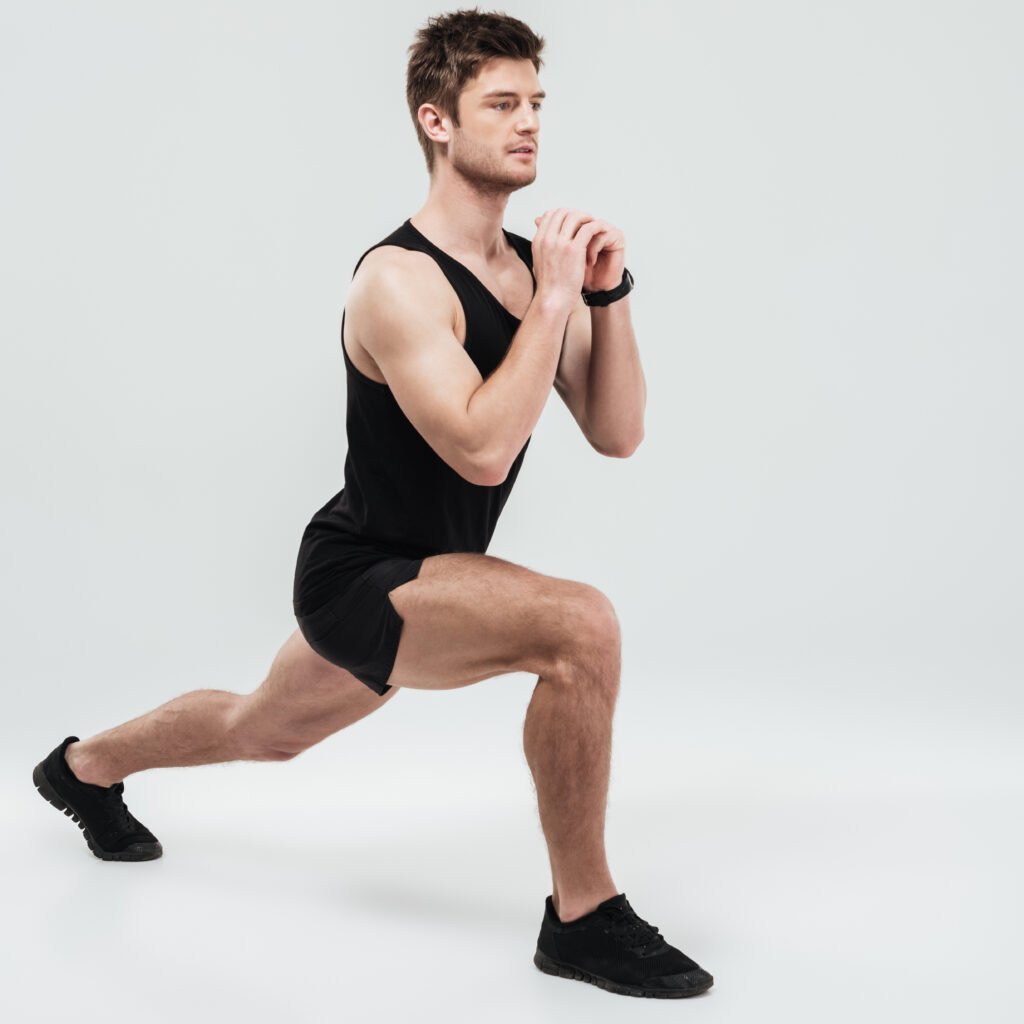
Squats are a flexible exercise that works numerous muscles in your lower body, including the quads, hamstrings, and glutes.
To make the first few squats easier, go down halfway. Then, gradually raise the difficulty until the final few repetitions are complete squats.
Once you’ve warmed up, you can increase the intensity by gripping weights during your squats.
To perform a squat:
1.Stand with your feet hip-width apart, and turn your toes slightly forward or out to the side.
2.Engage your core, maintain a straight back, and slowly lower your hips until your thighs are parallel to the floor.
3.Pause briefly with your knees above, but not beyond, your toes.
4.Exhale and get back up.
5.Perform 1-3 sets of 12-15 reps.
Planks
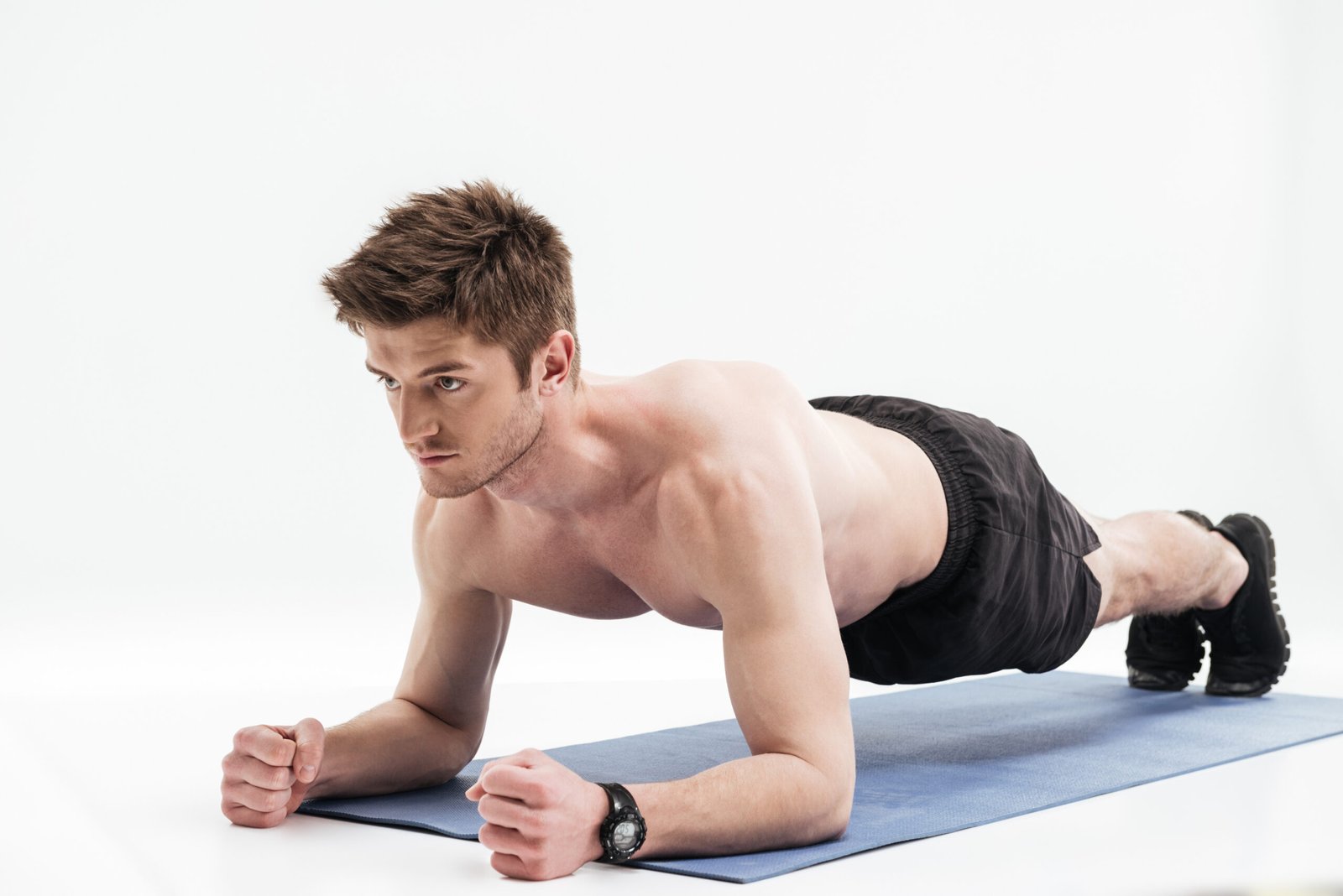
Planks are a terrific warm-up for developing core and back strength, as well as improving balance and alignment.
Once you’ve warmed up, try variants like the forearm plank and side plank.
To perform a plank:
Get into a push-up position. If you’re a beginner, start with a plank on your knees. If you’re more advanced, attempt a plank on your forearms. If you’re somewhere in the middle, try executing a high plank with your arms completely extended.
Keep your hands and feet firmly planted on the ground. Keep your back straight and your abdominal muscles taut. Do not let your head or back drop downward.
Hold your plank for 30 seconds to a minute.
Side lunges
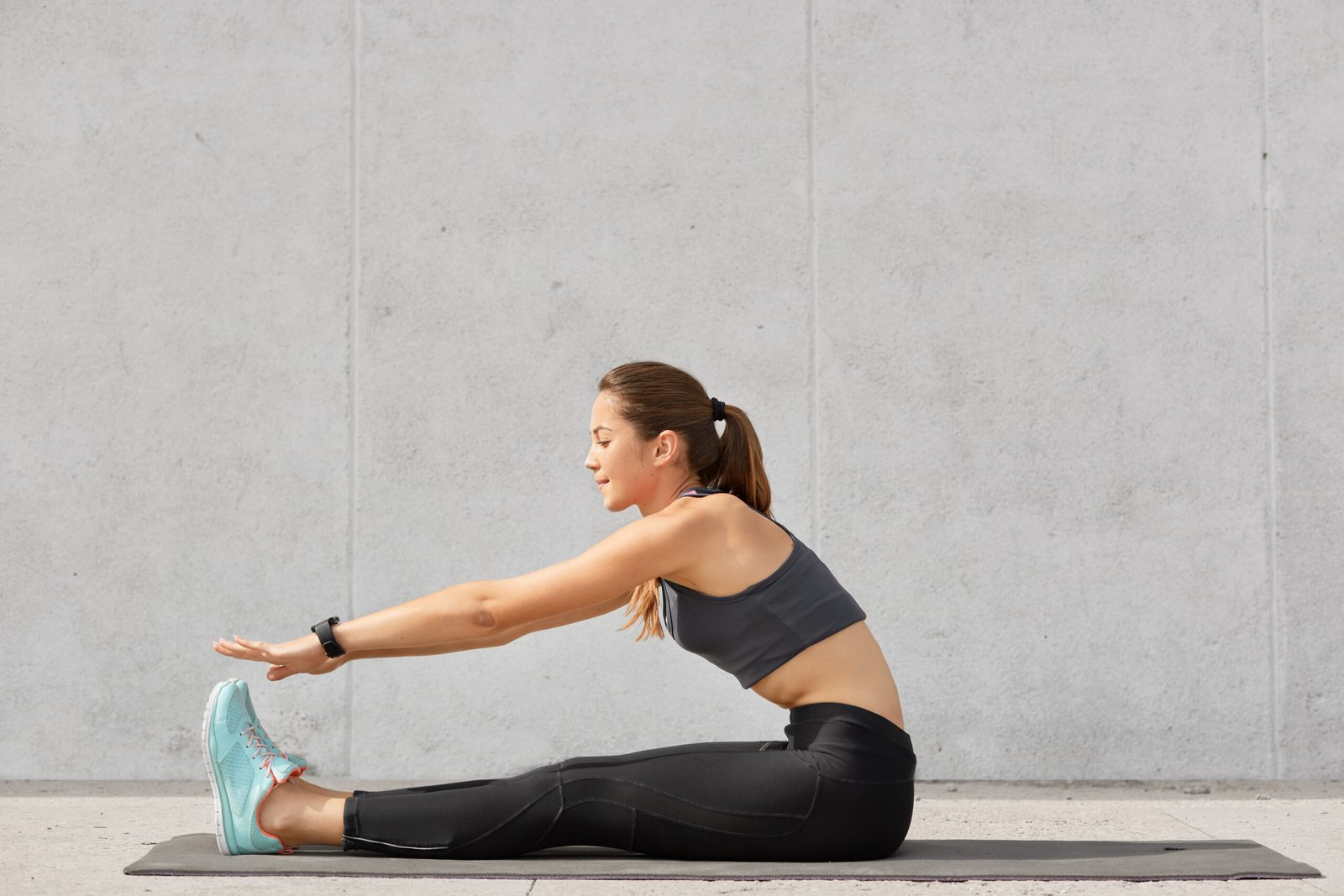
This workout targets the lower body and can help strengthen your legs, glutes, and hips. You can make the first few lunges simpler by merely going halfway down before progressing to the complete lunge.
After warming up, you can increase the challenge by performing a set with weights or opposite hand reaches.
To perform a side lunge:
Stand with your feet hip width apart.
Step your left foot to the left and press into your right foot.
From here, squat down with your left leg bent and your right leg straight.
Pause briefly with your left knee above, but not beyond, your toes. Lift your hips and bring your left foot back to the starting position.
Make a lunge to the right side. This is 1 rep.
Do 1 to 3 sets of 8 to 15 reps.
Pushups
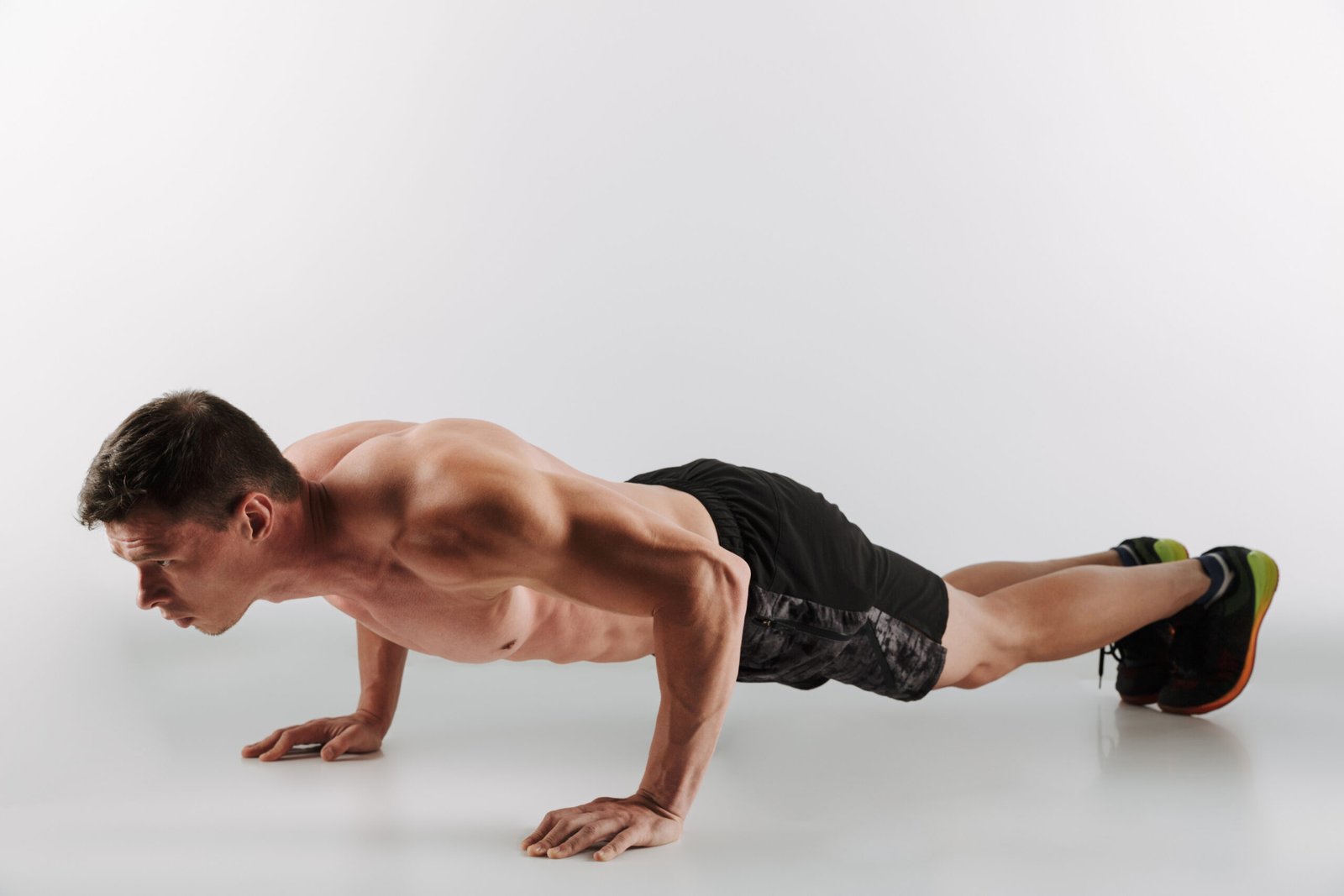
This traditional exercise targets the upper body, core, and glutes. To make it easier, do pushups on your knees.
After you’ve warmed up, you can raise the difficulty by pausing in the lower position for a few seconds.
To perform a push-up:
1.Position yourself in a high plank position at the peak of a pushup, palms flat on the ground and hands shoulder-width apart. Maintain a posture with your shoulders higher than your hands. Your back should be flat, and your feet should be arranged behind you. Keep your abs pushed in.
2.Slowly drop your body down to the floor. Do not allow your torso or back slump. Your elbows may stretch out when you perform this exercise.
3.When your chest or chin is almost touching the ground, push up and straighten your arms. Keep your elbows slightly bent to prevent hyperextension.
4.Perform 1 to 3 sets of 8–12 repetitions.
Triceps warmup
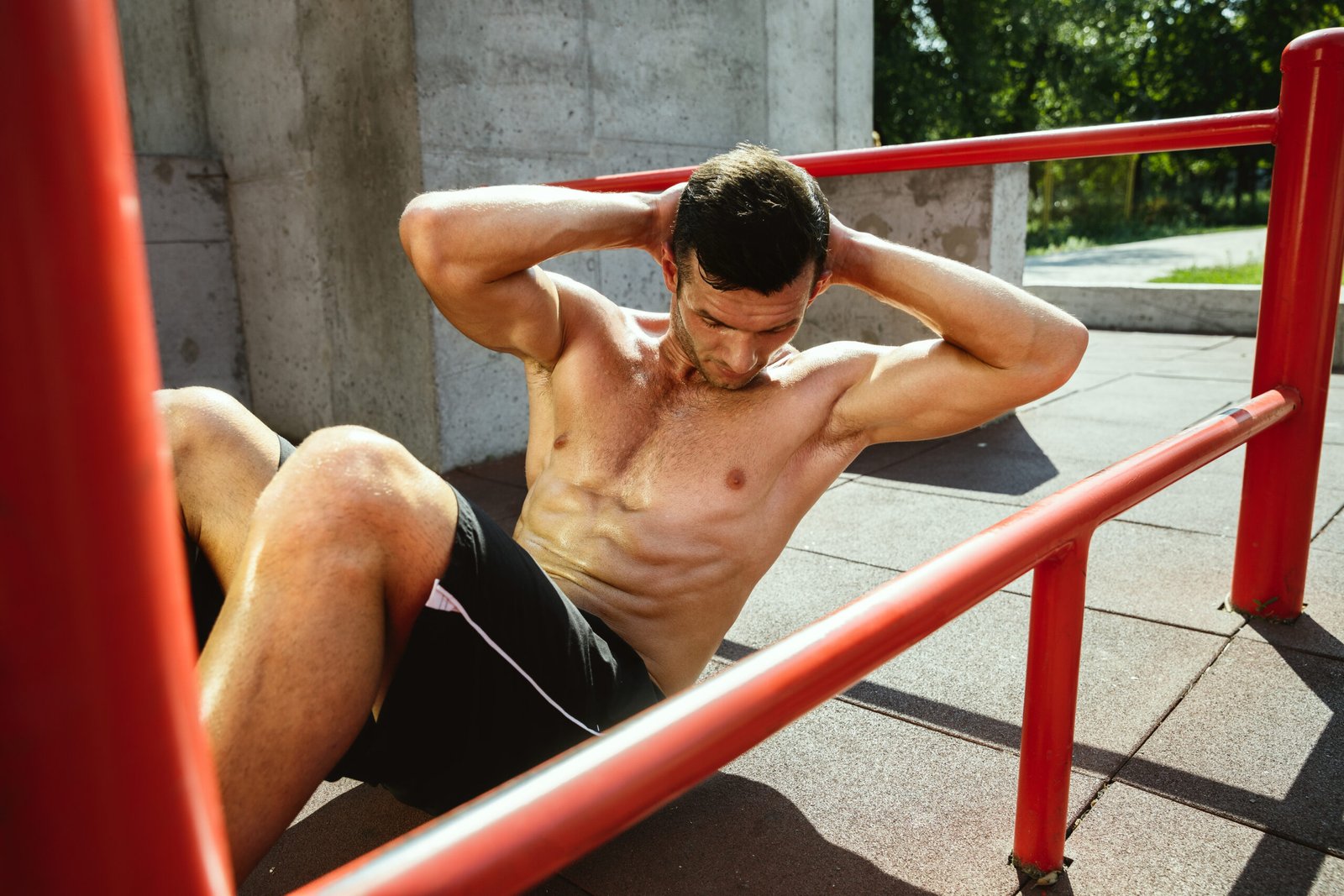
This exercise consists of numerous exercises that will help loosen and warm up your triceps.
To perform a triceps warmup:
Extend your arms out to the sides, parallel to the floor, palms facing down.
Keep your arms straight and rotate in backward circles.
After 20-30 seconds, rotate your arms in forward circles.
After 20 to 30 seconds, rotate your palms to face forward and pulse your arms back and forth.
After 20 to 30 seconds, repeat the pulsating motion with your palms facing backward, upward, and down.
Perform 1–3 sets of these motions.
Jogging leg lifts
Jogging leg lifts can increase your heart rate and enhance circulation throughout your body.
Depending on the space provided, you can jog in place or run back and forth. Perform each component of this exercise for 30 seconds to one minute. You can make this exercise less intense by walking at a slower pace.
To perform running leg lifts:
Jog at a slower pace.
After about a minute, jog with your knees up toward your chest for at least 30 seconds, or jog with your feet raised near your buttocks.
Return to jogging slowly.
How long should a warmup last?
Try to warm up for at least 5 to 10 minutes. The more difficult your workout, the longer your warmup should be.
First, focus on broad muscle groups, followed by warmups that replicate some of the motions you’ll be doing while working out. For example, if you plan to run or bike, start at a modest pace to warm up.
The bottom line
Warmup activities, while sometimes disregarded, are an essential component of every training plan. Before you begin your workout, your body requires some form of physical activity to warm up its muscles.
Warming up can improve your flexibility, athletic performance, and lower your risk of injury.
You can either perform slower versions of the motions you’ll be doing during your workout, or you can try a variety of warmup activities, such as those listed above.
If you’re new to fitness or have a medical condition or health concern, see your doctor before beginning any new workout regimen.


Add a Comment